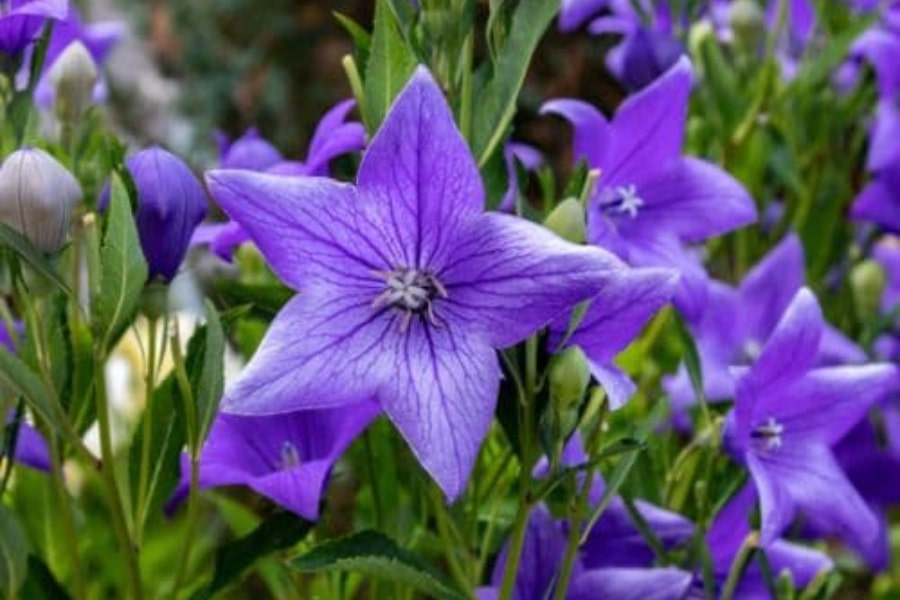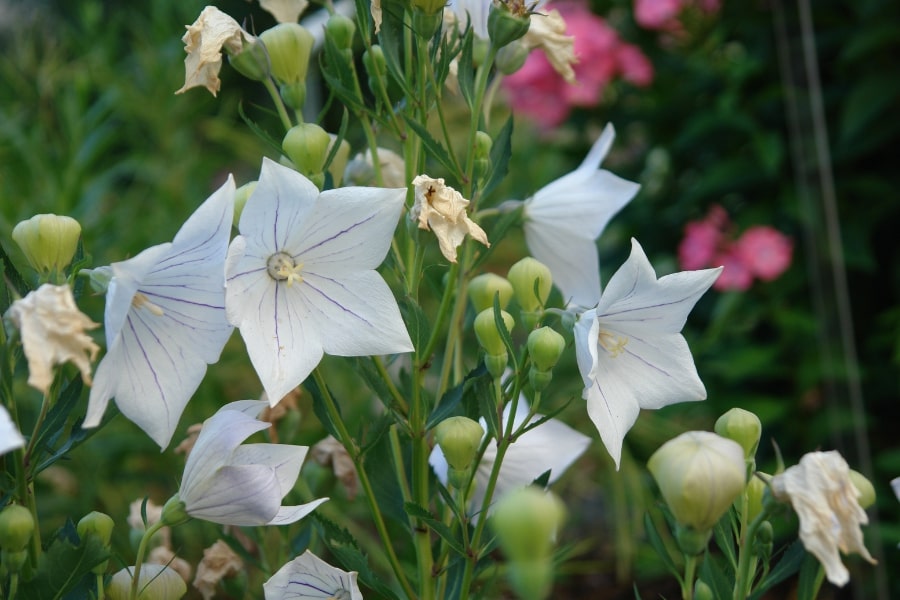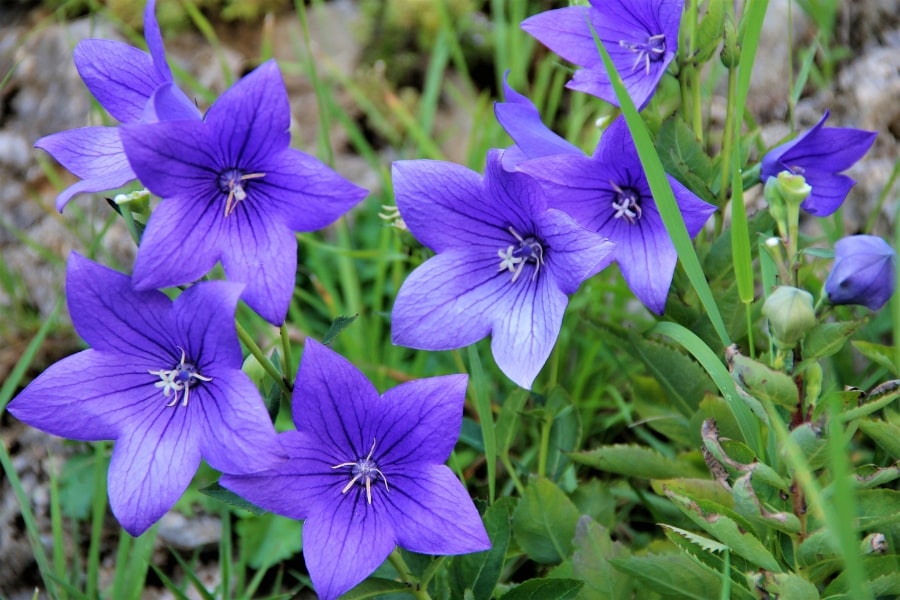Balloon Flower, scientifically known as Platycodon, graces gardens with its enchanting, balloon-like buds that unfurl into exquisite star-shaped blossoms. As a member of the Campanulaceae family, Platycodon captivates with its unique buds, vibrant flowers, and overall charm. Originating from East Asia, this perennial plant is cherished for its beauty, ease of cultivation, and symbolic significance. Balloon Flower is a compact and upright perennial that typically reaches a height of 12 to 24 inches (30 to 60 cm). Its growth habit is well-behaved, forming neat clumps of sturdy stems.

Our Selection of Balloon Flower
We are growing the following varieties in 2025:
Growing and Caring For Balloon Flower
- Balloon Flower performs best in well-draining soil that is rich in organic matter. Select a location with partial sunlight; however, it can tolerate full shade.
- While Balloon Flower is somewhat drought-tolerant, providing consistent moisture is essential for optimal growth and flowering. Water the plant regularly, especially during dry spells, and mulch around the base to retain soil moisture.
- The soil should be well-draining to prevent waterlogged conditions, as Balloon Flower is susceptible to root rot in overly wet environments. Applying a layer of organic mulch also helps suppress weeds and maintains a more even soil temperature.
- Balloon Flower benefits from a balanced fertilizer application in the spring to support healthy growth and prolific flowering. Use a general-purpose, slow-release fertilizer as it may encourage lush foliage at the expense of flower production.
- Regular deadheading is recommended to encourage continuous blooming and maintain a tidy appearance. Snip off the spent blossom just above the next set of leaves as each flower fades.
- Pruning can be done in early spring to remove dead or damaged stems and stimulate new growth.
- Balloon Flower is hardy in USDA zones 3 to 8, and in regions with cold winters, providing some winter care can help protect the plant. While the plant may die back to the ground in winter, it typically regrows in the spring.
- Balloon Flower can be propagated through seeds or division. Collect seeds from the dried seed pods in the fall and sow them in the spring. For division, separate established plants in early spring or fall, ensuring that each division has roots attached. Replant the divisions in well-prepared soil and water thoroughly.

Leaves and Flowers
The lance-shaped leaves of Balloon Flower provide an attractive backdrop to the star-shaped blossoms. The foliage is deep green and adds visual interest even when the plant is not in bloom. However, it’s the flowers that truly steal the show. Balloon Flower blooms from late spring through summer, and each bud swells like a balloon before unfurling into a five-petaled, star-shaped flower. The blossoms come in various colors, including blue, white, and shades of purple, creating a delightful palette in the garden.
Uses in the Garden
Planting Balloon Flower along borders or as edging creates a charming and well-defined garden space. The compact size and neat growth habit make it an excellent choice for framing flower beds or pathways. The long-lasting blooms of Balloon Flower are also perfect for cut flower arrangements. Harvest the flowers when they are in bud, and they will continue to open in a vase, extending the enjoyment of their beauty indoors.
The moderate size of the Balloon Flower makes it suitable for container gardening. Whether on a patio or balcony, potted Balloon Flower adds vertical. The adaptability of Balloon Flower makes it well-suited for rock gardens. Its ability to thrive in well-draining soil and tolerate varying sunlight conditions allows it to complement the rocky terrain and add a soft touch to these landscapes.

Frequently Asked Questions
Is Balloon Flower A Perennial?
Yes, Balloon Flower is a perennial plant. With proper care, the Balloon Flower can return year after year, delighting gardeners with their unique balloon-like buds and star-shaped flowers. It is known for its hardiness and adaptability, making it a popular choice for perennial gardens and landscape designs.
Why Are The Balloon-Like Buds Not Opening?
The balloon-like buds of Platycodon may fail to open if the plant is not receiving enough sunlight or if there is insufficient warmth. Ensure the plant is in a location with adequate sunlight, and be patient, as buds may take some time to open in cooler conditions.
Is Balloon Flower Prone To Pests and Diseases?
Balloon Flower is relatively resistant to pests and diseases. However, occasional issues with slugs, snails, or aphids may occur. Keeping the garden area clean, providing proper spacing between plants, and promptly addressing any pest issues can help maintain the plant’s health.
Can I Grow Balloon Flower In Containers?
Yes, Balloon Flower is well-suited for container gardening. Choose a well-draining potting mix, and ensure the container has drainage holes. This allows for proper water drainage, preventing waterlogged soil. Container-grown Balloon Flower can be a stunning addition to patios, decks, or balconies.
